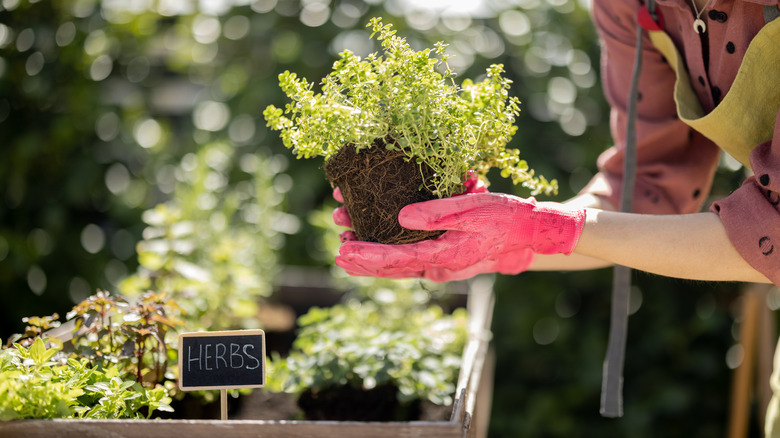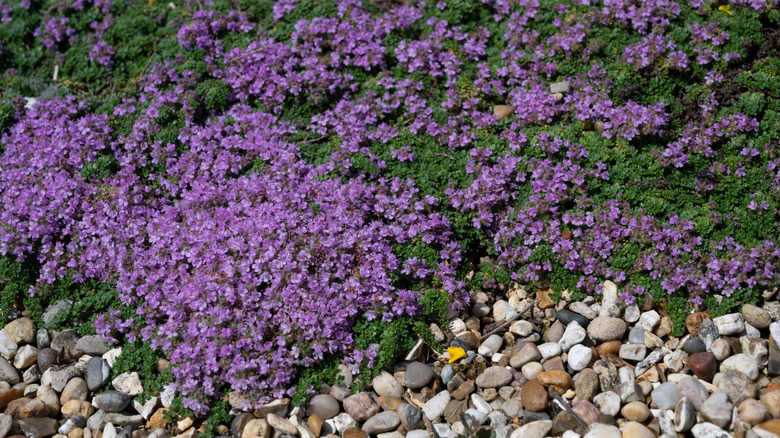Set Your Herb Garden Up For Success With One Addition To The Soil
Though there are several helpful tips for growing a thriving herb garden, if you really want to set your herb garden up for success, start by improving what's beneath your plants: the soil. Many herbs, particularly those from the Mediterranean region, do not grow well in dense soil or dirt with a lot of moisture. Gravel is an easy addition that solves both of these problems. By adding tiny stones to the top layers of a garden bed or container, you can enhance drainage, help herb roots breathe better, and lower the chance of disease. This is particularly helpful for dry-loving herbs like oregano, thyme, and rosemary, whose roots can get damaged if they grow in damp soil for too long.
Beyond preventing rot, gravel supports a stronger, healthier root system in other ways. You can, for example, add gravel to the soil to help herb varieties flourish in your dry, humid garden. However, it isn't only humid gardens that will benefit from this additive. A gravel-filled or mulched growing medium helps maintain stable temperatures, prevents soil clumping, and slows the spread of fungal problems in an herb garden. Topping beds with a thin layer of pea gravel or other small stones also keeps weeds at bay and limits humidity near the base of plants. It's a simple addition that mimics the rocky, well-drained soils many herbs have evolved to prefer — and one that can make a noticeable difference in their growth and maybe even their flavor.
How to add gravel to your herb garden soil the right way
Rather than being placed at the bottom of your herb garden bed, gravel should be mixed into the top of the soil. By adding pea gravel to the top 8 to 12 inches of soil, areas of compaction are broken up, and extra water can pass through rather than collect around plant roots. The quick-draining conditions that most herbs need — it's why easy-to-grow herbs are perfect for gravel gardens — will be supported better with this technique, which also improves aeration. Combine gravel with organic materials like bark or compost to further balance moisture levels.
By contrast, adding gravel to the bottom of containers or beds — a treatment still common in home gardens — does the opposite. Water gathers at the point where the soil and gravel meet, forming a damp area that deprives roots of oxygen and encourages rot. When growing herbs in containers, hanging baskets, or raised garden beds, make sure any drainage holes are unobstructed and fill planters to the top with a well-draining soil mix. As a finishing touch, add a gravel mulch to the top of the soil — 2 to 3 inches deep. As mentioned, this moderates soil moisture and temperature while promoting conditions similar to your herbs' native habitats and discouraging disease.

